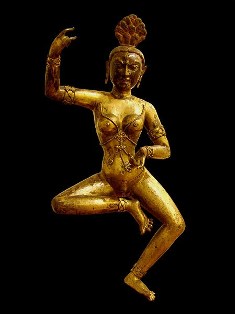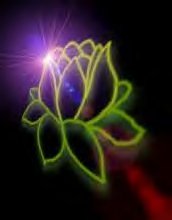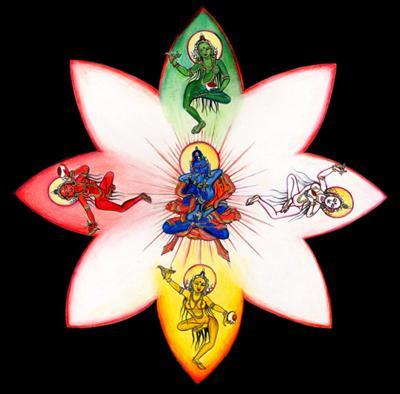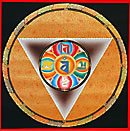About
THE ROARING LION

About The Roaring Lions






My name is Charlee. I am an American woman, but have spent most of my life traveling, experiencing various cultures and meeting thousands of people from different traditions and beliefs. On my journeys, I make a record of what is revealed to me and I share it with others who are inclined to hear the message. Every journey alters my spirit and teaches me about who we are. This is a glimpse into what I do, who I am and why I created "The Roaring Lions" website.
I was born into a strong, spiritual, loving family whose principles of honesty, compassion and perseverance course through the very fiber of my being. During my early years we were farmers, caretakers of the earth and animals. We lived in a symbiotic dance with the elements and we prayed together each day in gratitude for our fortunate existence. My earliest memories of childhood are from when I would hear stories about the Native American Indian. These legends told of tribal warriors adorned with head feathers, bows and arrows, painted faces and no shoes. I remember my only wish in life at that time was to have a horse, a pinto horse, painted with the symbols of the Great Spirit. I would visualize riding bareback with other braves and discovering what lay at the edge of the vast horizon.
When I was old enough to understand, my mother gave me a book of my ancestral lineage with a line traced back to the Algonquin tribe from the northeast territory of America. She told me of our ancestor, the great chief Massasoit, a man of peace, a benevolent leader to thousands of people in the 1600’s. My mother’s heritage had been documented, preserved and passed down through many generations by the women in my family.
My father’s lineage is European, with roots in Great Britain and Denmark. When the Europeans arrived in America, Chief Massasoit was instrumental in their survival in the strange new environment. Chief Massasoit’s daughter married a European settler and merged two totally different cultures, forming one of my ancestral lines. This is how my family came to be of multi-cultural backgrounds and I am very proud of my Native American lineage.
I remember one of the more traumatic moments of my childhood - around eleven years of age – when I learned that my Algonquian family line was extinct. I experienced grief and disappointment, as I wanted to connect with my heritage and learn of their ways. When I learned they were wiped out by the Europeans, I tasted the harsh bitterness of destruction, greed and sorrow that is difficult for a child to comprehend. The Natives didn’t conform to Christianity, which the Europeans were implementing into this shamanistic culture, and they were destroyed through cultural genocide. I felt a sharp, personal connection to this great historical tragedy.
During my early teen years, my father - a farmer, soldier and scholar - lived in China and at the same time, my brother was a missionary in Taiwan. They returned when I was twelve and brought souvenirs of wood and jade statues of Buddha. Although we were a traditional Christian family, the Buddha’s influence found its way into my life. I studied the teachings of people who spoke of compassion, yet finding living examples of this virtue was a challenge in ordinary life. It became my mission to find out what compassion was so that I could show others where to look. I began to study Buddhism as a method for disciplining the mind and uncovering the inherent Buddha nature, which is said to be “saturated in compassion” in its essence, and available to all of us. I saw Buddha as an example of what we all could become.
Since the beginning of my adult life I was drawn to a career in media communications. I also had a natural ability for working with animals and I eventually merged my interests into training animals for the Hollywood film industry. I thrilled at the opportunity to raise and train an infant Bengal tiger cub and I work directly with several other exotic species, such as lions, bears, elephants, leopards and monkeys. Yet, during these experiences it became increasingly difficult to witness the animal’s neurotic cage behavior and the effects that prolonged captivity creates for any being. I determined I would witness the animals in a state of freedom and document their behavior. My goal was realized in 2000, when I traveled to Tanzania to assist with the opening of a wildlife rehabilitation program. Because of my experience in horse training, I landed a job as a guide for horseback safaris circumnavigating Mount Meru, the sister mountain of Kilimanjaro. This subsequently led me to a camera position with BBC working on a film project near the Serengeti National Park. Our hosts, the Massai tribe, comprised of over fifty nomadic Massai families, took us deep into the world of the untamed wilds of Africa. Living in the natural world with free animals, as well as working with the Massai warriors taught me the values of courage and respect for all life: a core Buddhist principle.
After six months of living in Africa, I had an opportunity to go to India to participate in the Buddhist teachings. After studying Buddhism as a method for disciplining the mind, I was anxious to understand more so I could apply it to my work. On the first day in Dharamsala, India, I experienced a deep connection with the Tibetans. I felt like I had come home. As I saw the faces and dress of the Tibetans and listened to their Buddhist teachings, which paralleled the Native American way, my quest to find my spiritual family had come full circle.
Several projects came into play. One of them, “Project Dogma,” was a street dog vaccination program which I helped put into action. Because of three deaths of Tibetan children caused by rabid dog attacks, the government planned to cull all street dogs. We raised money for rabies and distemper vaccines; persuaded the authorities to give us a chance; and were successful in saving over seventy wild dogs from a painful death. Our efforts led to the current program in Dharamsala, where the vaccinations continue.
In 2003, I began producing my first documentary entitled “Buddha Future,” with a focus on the youth of the world and their concerns for a peaceful future. After studying the life of the eighteen-year-old Buddhist Lama, the 17th Karmapa, I decided to interview him as a key element in my documentary. I had met the Karmapa for the first time in 2000, when he captured my attention as a powerful teacher and voice for the future generations of Buddhists and non-Buddhists alike. This journey of inquiry took me to the heart of the Tibetan community and particularly to the realm of the young Buddhist master, who influences millions in the Buddhist and Tibetan communities through his grace.
For the next six years the work on my documentary evolved into a full time commitment to help the Tibetan community living in exile, as well as the destitute Indians who lived around me. I volunteered to teach English to the Karmapa’s monks and published articles about the Karmapa in international Buddhist publications. I coordinated several charities, bringing aid to poverty stricken Indian villages under the guidance and support of His Holiness the Karmapa. I immersed myself in the teachings of Buddhism, working to achieve enlightenment and understand compassion. My quest included an important pilgrimage; a seven-day walk through the middle of the Maoist war in Nepal to the Everest range of the Himalayas. I lived and practiced in a small cave where the great Tibetan yogi, Jetsun Milarapa, did many years of retreat in the 11th century.
Through the work with the Tibetans and with the Karmapa, I achieved the rare opportunity of getting to know the Karmapa on a personal level. I became aware of his struggles with politics and his complex situation living as a Tibetan refugee in India. I also learned of this young master’s genuine compassion and dedication to world peace. I saw his arbitrary confinement and his censorship, and I also discovered that he is literally filled with creativity as an artist, poet, painter and environmentalist. He has a thirst for knowledge and a keen, compassionate mind. After nine years of watching his situation and knowing the inner details, I have re-focused my aims to bring attention to the invaluable teachings that the Karmapa embodies and is enthusiastic to share with all beings.
I have left the teachers, students and friends that I established in India to return to America to accomplish this aim because it is clear that it needs to be done. The Roaring Lions website was created in 2009 as a platform of information pertaining to the Karmapa and his teachings. Through my own experience with the loss of my Native American tribe, I speak as someone who sees the value of honoring cultural diversity. The Tibetans are facing the extinction of their culture and the lineage of the Karmapa is also precarious. Through awareness and compassion; through action and perseverance; I believe that we can create a peaceful and positive evolution into the 21st century and I believe His Holiness has an integral role in the development of a peaceful future. Through my work, I have seen great potential in the younger generation and they should be supported and nurtured so they may navigate through these challenging times that we face. They relate with His Holiness the Karmapa because he is one of them, yet he is unique as he inherited thousands of years of experience through the unbroken continuum of reincarnated consciousness that he embodies. It is a symbiotic intention.
The Native Americans believed that by respecting Great Spirit, Mother Earth, Grandfather Sky, the four-legged, the two-legged, tree people, rock people, creepy crawlers, and all other aspects of creation, we can change the heavily trodden path of potential destruction that we face as human society. His Holiness the Dalai Lama has tirelessly worked to help our world understand this concept and is a living example of compassion, a bright light in an increasingly dark world. His student, the Karmapa is also the embodiment of the teachings of compassion and wisdom. Just as His Holiness the Dalai Lama is allowed freedom to travel and teach, the Karmapa’s freedom is critical to the propagation of the genuine Dharma.
I hope that through offering my perspective and experience as someone who has seen first hand the influence for good the Karmapa freely gives, I can encourage others to support the Karmapa’s freedom to travel and teach in our world. I have developed various projects in support of Karmapa’s freedom and I hope others will do the same. The Buddha has said, “The mind is everything. What you think you become.” Just as all generations are given the chance to change things, I believe we are responsible to create a world of peace. May the Karmapa’s teachings, which are saturated in the primordial virtues of wisdom of compassion, reach all the dark corners of our world. May he be free so others can see what I have seen by knowing him. This is my aspiration.
May we all be free.
Charlee


(See other published articles on Projects page)
